The New Jersey Devils are still riding high after completing a historic turnaround last season, setting a franchise record for wins and points and then defeating the arch-rival New York Rangers in the first round of the playoffs. Optimism abounds both inside and outside the Prudential Center as the team and the fanbase each have lofty expectations for the season. With that optimism in mind, below are five questions the Devils must address to dive headlong into the opening of their championship window.
1. Who Leads the Team Onto the Ice on Oct. 12 Against Detroit?
Last season, Vitek Vanecek established himself as the starting goaltender, ripping off career highs in games (52) wins (33), goals against average (GAA) (2.45), and save percentage (SV%)(.911). He became the first Devils goaltender not named Martin Brodeur to win 30 games in a season. He was bolstered by the revelatory play of rookie Akira Schmid, who burst onto the scene following an injury to Mackenzie Blackwood. Schmid featured in 18 games and led the team with a 2.13 GAA and a .922 SV%.
Vanecek seemed to tire down the stretch, playing through a brutal month of March that saw the team playing 16 times in just 30 days. He regained his form in a 3-0 shutout of the Carolina Hurricanes and appeared poised to be a factor in the playoffs. Appearances, though, can be deceiving.
In keeping with a disturbing pattern set in his days as a Washington Capital, Vanecek fell apart in the playoffs, surrendering ten goals over the first two games against the Rangers, putting his team in a seemingly insurmountable 2-0 deficit. He would ultimately surrender 7.7 goals above expected in only seven games of action through the two rounds the Devils played. The lasting image of Vanecek was one of a complete loss of confidence, as shown in his final post-game interview of the playoffs.
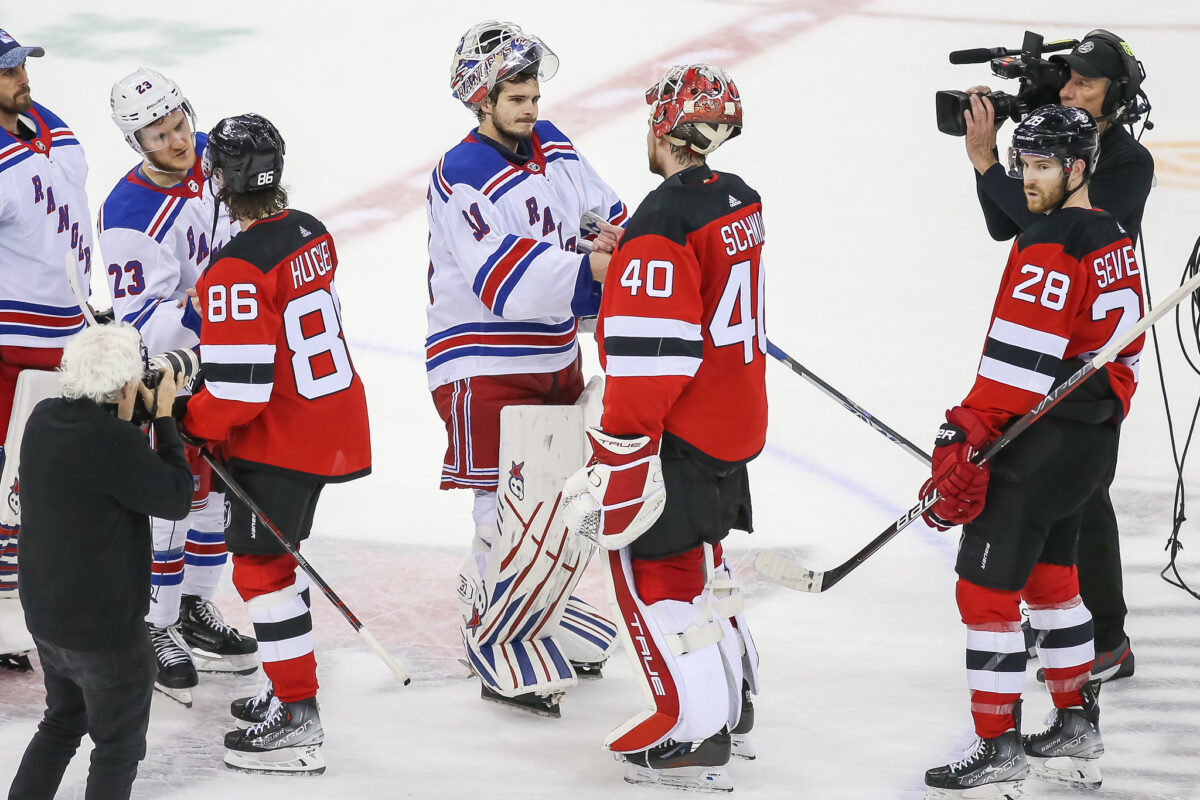
Fortunately for Vanecek and the Devils, Schmid quickly shook off the rust and went on to outplay reigning Vezina Trophy winner Igor Shesterkin and led the team to a series victory by shutting out the Rangers twice in the final three games. A fatigued Schmid went on to not fare as well against the Hurricanes in the second round, but his season ended on a hopeful note despite the team getting eliminated in overtime.
The main question general manager Tom Fitzgerald and staff have to answer is whether they trust a combination of Vanecek and Schmid to backstop this team and be able to hold up through multiple rounds of playoffs. Each goalie presents a unique question, namely can Vanecek reverse his postseason trend (.834 SV%, 4.52 GAA), and can Schmid be counted on to play 45-60 NHL regular and postseason games being only two years removed from the United States Hockey League, and having only played 24 career NHL regular season games. Reports earlier this summer indicated that the Devils want Schmid to get a full AHL season as a starter before coming back to New Jersey.
Of course, the team could still pursue a goaltender through a trade. Rumors abound regarding the availability of Connor Hellebuyck, Juuse Saros, or less high-profile goalies like Casey DeSmith. Time is running out to acquire a goalie before the start of training camp to give him time to acclimate to his teammates and a new defensive system. Notably, no team this century has won a Stanley Cup with a starting goalie acquired at the trade deadline.
As for now, the Devils appear to be willing to answer the question with Vanecek leading the team onto the ice opening night.
2. Will the Defense Hold Up?
With the departures of Ryan Graves and Damon Severson, the Devils have lost a combined 949 games of NHL experience. Replacing that with any players would be difficult, but asking two players with a combined 68 NHL games to step in and expect the transition to be seamless appears, at best, optimistic. Aware of this potential issue, the team traded for veteran defenseman Colin Miller to sure up the right side and help with penalty killing. Miller’s entrance into the lineup will likely cost 2022 second-overall draft pick Simon Nemec his place on the NHL roster.
Head coach Lindy Ruff is reportedly wary of starting the season with two rookie defensemen in his top six, making it likely that Nemec begins in the American Hockey League (AHL) unless he blows the team away in camp. The Devils will need Kevin Bahl to step in and try to take over minutes vacated by Graves on the left side and become an impact penalty killer. The ability of Bahl to continue to steadily improve as the year progresses will be one of the determining factors in how far the Devils progress this season. He recognizes the opportunity in front of him:
“You got two top D-men in the league moving out, so it’s definitely going to be different. But at the same time, I think we still have a really good D corps. I want to come in with the same mindset I had last year, where you’ve just got to fight for every inch. I do feel very prepared, but I don’t feel at all comfortable.”
Kevin Bahl, August 1, 2023 to the assembled media following him re-signing with New Jersey
While many point to the loss of Graves, the impact of losing Severson on the third pair is greater than most recognize. Of the Devils’ defensive pairs, with at least 150 minutes played together, Severson is on each of the top four pairs ranked by expected goals for percentage (xGF%). The team has to hope that John Marino continues to serve as a shutdown defender and that it can expect reliable defending from Miller, who had an xGF% of 51.9 but whose team scored 61 percent of goals while he was on the ice at even strength.
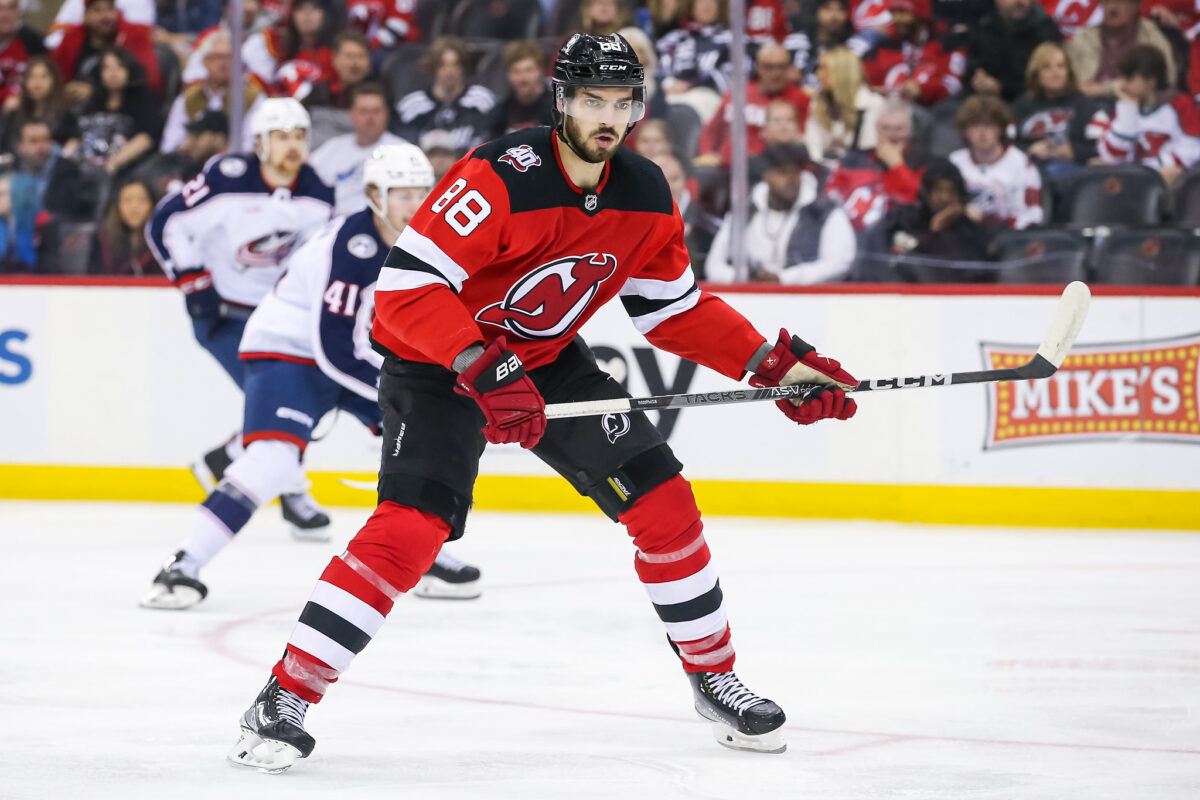
Luke Hughes will likely be paired with Marino to begin the season. The pair closed out the postseason playing together over three games for a total of 21 minutes. In that time on the ice, they had an over 70 xGF% and did not concede a goal. Sometimes the best defense is a good offense, and though Ruff prefers to play strong out of the back first, this year’s Devils may have to outscore some of the growing pains sure to be experienced by a unit not used to playing together.
3. Can the Devils Move Up 5-7 Spots in the Power Play Ranking?
A simple way to take pressure off the young defense is to improve in special teams. Last season, the Devils finished 13th in the league in power play conversion percentage, five spots ahead of their 18th-place finish in 2021-22. With the additions of Timo Meier, Tyler Toffoli, and Luke Hughes, there is reason to be optimistic that a vault into the top ten is likely.
One glaring issue is that the team needs to spend more time on the power play. Last season, they finished second to last in 5-on-4 power play minutes. The team would do well to focus on drawing more penalties and decreasing the number of penalties they took to even out power plays. Most importantly, they need to be better finishers around the net and load up on goals in the dirty areas. Last season, they scored seven goals below expected at 5-on-4. Had the Devils only scored seven more power-play goals, as was expected, they would have landed tied for fifth in the league in power-play percentage and likely won the Metropolitan Division.
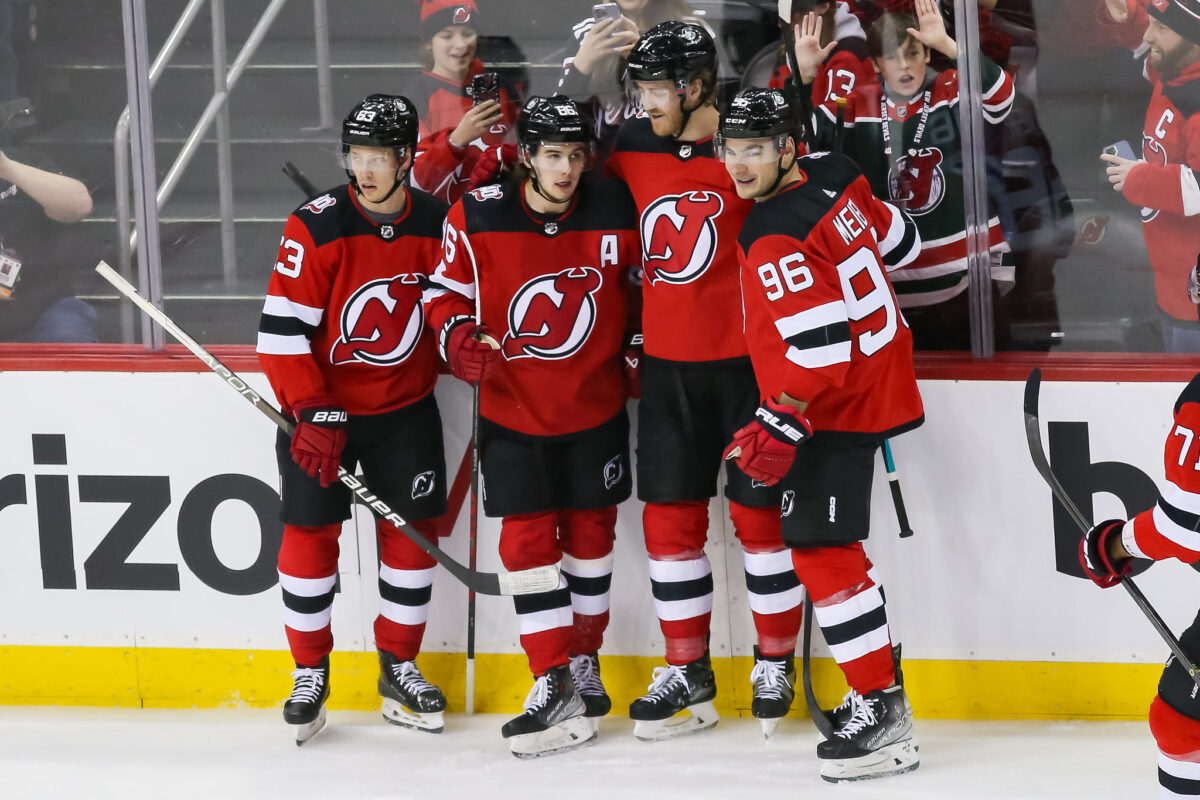
With the level of offensive talent assembled by Fitzgerald, there is no reason that the power play could not at least convert at 25 percent. The increase of just 3.1 percent gets them to 25 and puts them among elite company. For the past two seasons, the team lacked right-handed shooting amongst the power-play forwards and someone to score around the net. But these problems seem to have been solved with the addition of Toffoli and Meier. Either player would have ranked as the top power-play goal scorer on the Devils last season. Adding them both to PP1 should make the unit a force and less reliant on set plays.
4. Will a Forward Prospect Make an Impact?
One of the keys to the plan implemented by Fitzgerald has been finding young players to build a core and then finding complementary veteran pieces to fill out the edges. This offseason, there was a clear effort to fill in potential gaps in the bottom six. The team re-signed Michael McLeod and Nathan Bastian and added Tomas Nosek, Chris Tierney, and Shane Bowers. There remains a winger position in the middle six that could potentially be filled by a rookie.
Related: Devils’ Ideal Power Play Units for 2023-24
Though very different players stylistically, it appears that both Nolan Foote and Alexander Holtz have reached the point in their careers where it is time to find a role in the NHL. Holtz, 21, was the seventh overall pick in the 2020 NHL Draft and is renowned for his shooting and playmaking ability but has been held back by his skating and his ability to maintain defensive and neutral zone integrity. In his exit interview this past May, the team reportedly advised Holtz that this summer is crucial in his development and time is running out for him to contribute. The addition of Toffoli puts less pressure on Holtz to be an immediate goal scorer and would allow him to acclimate more to the NHL game, especially if he slots in on the third line with Erik Haula and Ondrej Palat.
Nolan Foote was acquired as compensation for the Devils trading Blake Coleman to the Tampa Bay Lightning. Foote is a big, powerful winger who provides solid two-way play and is also hampered by his skating. In brief call-ups last season, he demonstrated why the team is so high on his prospects and impressed with his development into a middle-six power forward. He turns 23 in November, and unlike Holtz, he would need to clear waivers should he be sent to the AHL.
“Nolan Foote, I think he’s the example of proper player development,”
-Tom Fitzgerald, May 19, 2023
There is room on the roster for both players should they impress in training camp. Each has shown that they have met all the challenges possible in the AHL. Either highly touted prospect could potentially get moved for a goaltender, but more likely, they will arrive in camp ready to compete for a spot in the lineup. Other forward prospects who will have an opportunity to contribute in the NHL include Graeme Clarke, who totaled 58 points in the AHL last season and is another candidate to fill the hole on the third line. He provides insurance should Holtz not come to camp at the level the team expects or is traded.
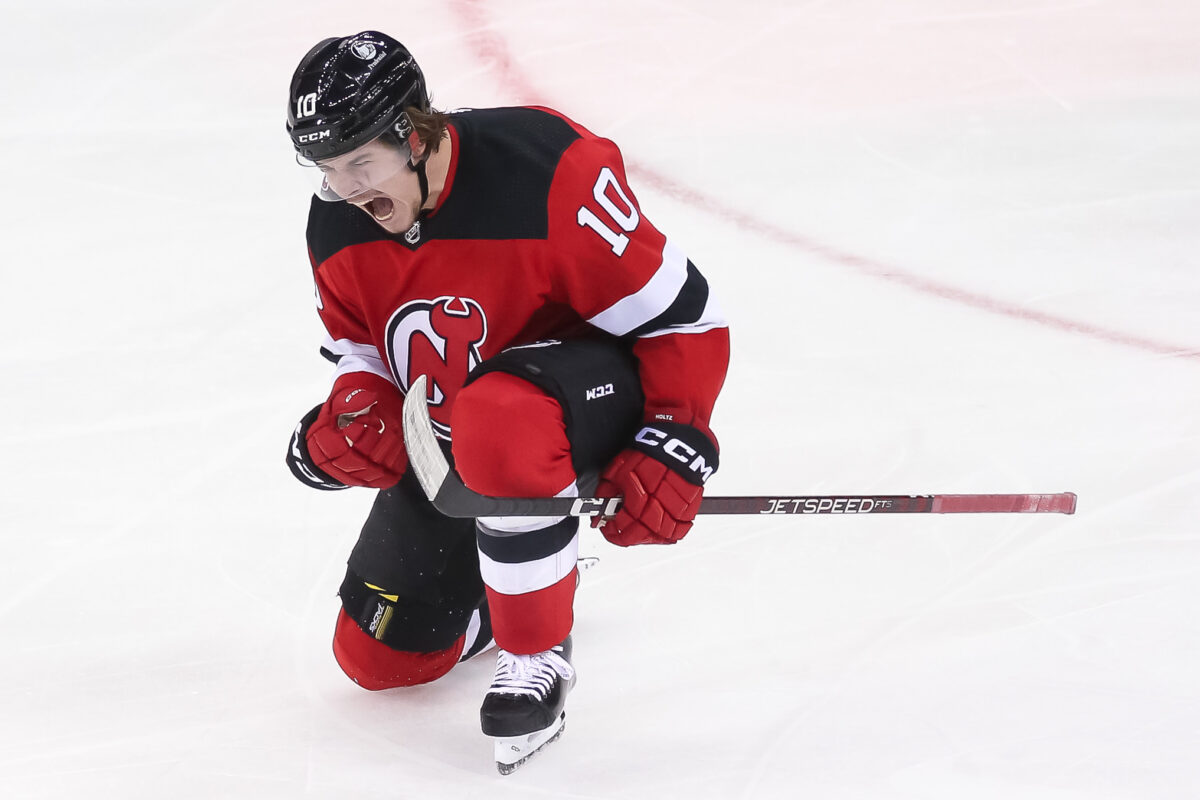
There is every reason to believe that the lineup for opening night against the Detroit Red Wings will include at least one of the three main forward prospects, which will likely be determined in practice and preseason competition. The prospects are fortunate that the team has so much depth, as it will allow them to acclimate at a slower pace and not be relied on to contribute on PP1 or in a top-six role.
5. How Many Games Will Be Lost to Injury?
As it is said, the most important ability of a professional athlete is availability. Last season, the Devils were fortunate to avoid major injuries to much of their core group. Palat, Bastian, Mackenzie Blackwood, and Marino all missed significant time. One of the biggest keys to the upcoming year will be using depth to make sure that nagging injuries do not turn into significant injuries and to fill in when players are out.
Few teams could survive a significant injury to a superstar, though the Hurricanes did well without Andrei Svechnikov for the latter part of the season. The Devils only have to look back to the 2021-22 season when any success the team deserved was derailed by a litany of major injuries to goaltenders, causing the team to use seven during the season.
The Devils were wise to bring in players with considerable size and grit (Meier, Nosek, Curtis Lazar) to bolster the toughness of the team and protect its stars. As Jack Hughes showed in the playoffs, this is not a team that is unwilling to stand up for themselves or each other. Despite the perception that Ruff is an “old school” head coach, both he and the organization put a premium on wellness and rest throughout last season, especially down the stretch, where the team chose off days or optional skates rather than formal practices when faced with the option.
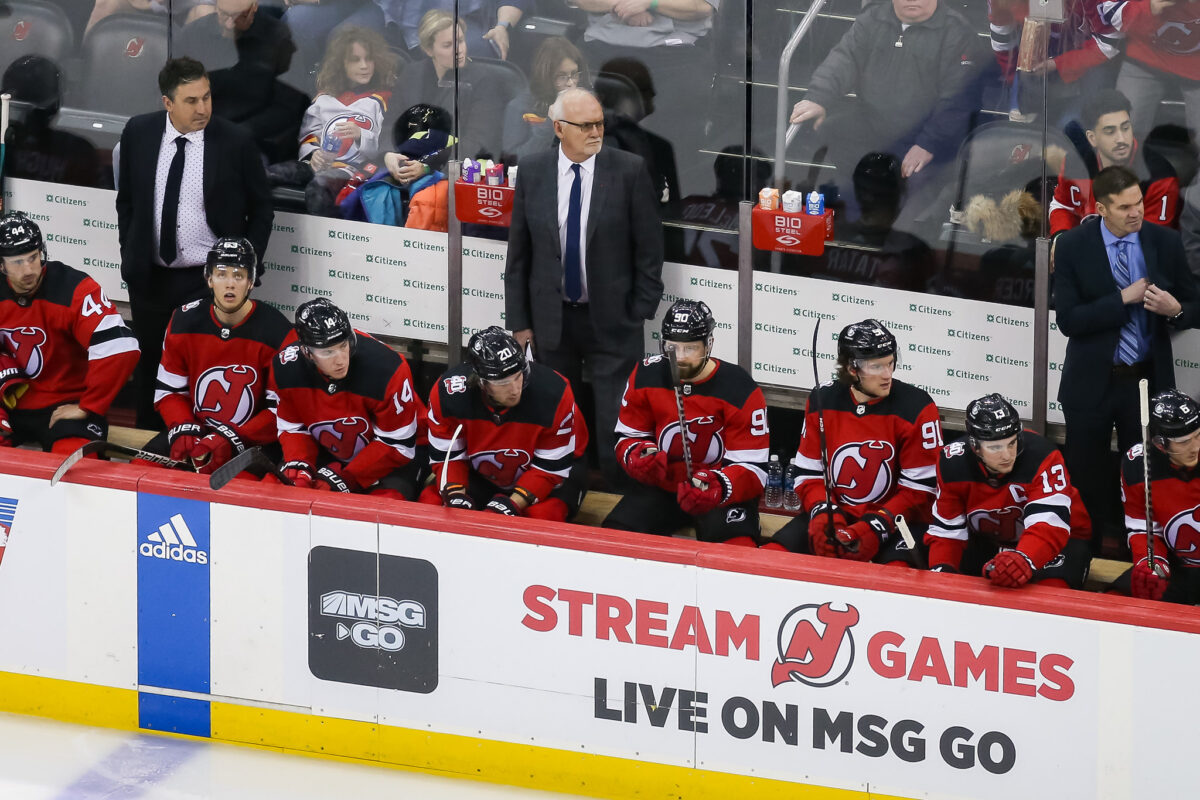
The Devils ended the playoffs mostly healthy. The only injuries disclosed to the media were wrist surgery for Dougie Hamilton, continued shoulder rehabilitation for Nathan Bastian, and Jack Hughes recovering from an unspecified injury that almost kept him out of the final two playoff games. Hughes did tell reporters that he expected to be ready to start camp. With the team’s average age hovering around 26 years old, the youth of its players should also help both with injury prevention and recovery. Keeping the answer to this question to a minimum number of games will go a long way toward determining how deep a run this team can make.
The Devils have their sights set on the Stanley Cup. They proved last season that they have the talent to win in the playoffs. Every season is different, and with new coaches and personnel come new challenges. In order to take the next step towards a championship, they will have to have an answer for each of the above five questions.

